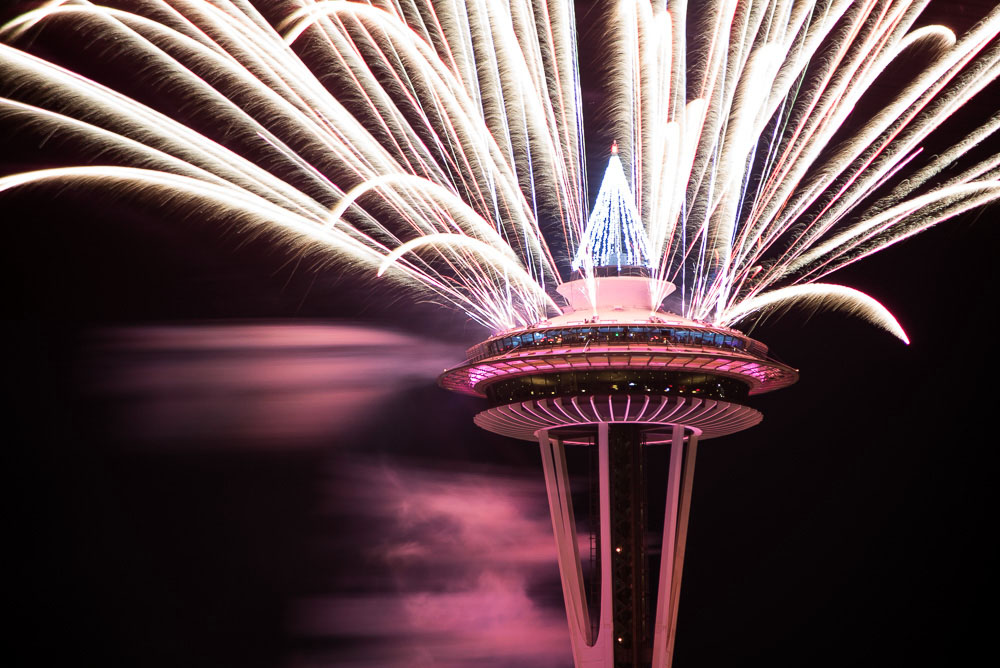
People playing a game of pool inside Shea’s Tavern. Photo by Mike Higdon.
In November, a new photographic theme emerged: repeated shapes and revisited narratives. In November, I changed my approach and it illuminated new ways to capture images. But I couldn’t have done that without October.
November marks the fifth month of my 365 photo a day on film project that started July 1. On June 30, 2017, I will take my last photo. Here are some previous posts I’ve written about the project to catch up on:
- Shooting 365 photos of Reno life on film
- 5 FAQs about my film-only 365 photo project
- 4 lessons in 4 months of my first 365 film project
In October, I discovered that not everything needs a story and sometimes a photo is just a photo. In November, I played with that idea and discovered discreet stories and weird connections. November was the best month of the project, so far.

At The Generator, an art space dominated by Burning Man artists, Mischell Riley shows off her DaVinci head models. The models helped her pay for and build the full-sized Burning Man exhibit. Photo by Mike Higdon

On the front lawn of the IGT-Mathewson Knowledge Center at UNR, Mischell Riley’s Inside the Mind of DaVinci head from Burning Man now has a new place to rest. Photo by Mike Higdon
On Time
In July (first photo), I was at The Generator, the collaborative art warehouse in Sparks. There I met Mischell Riley, who was still constructing “Inside the Mind of DaVinci” for Burning Man. You can see the tiny prototypes in the foreground and, if you squint the right way, you’ll see the wire frame of the full-size head in the background.
I never attended Burning Man, so I figured I would not see the sculpture again.
But then DaVinci appeared on the University of Nevada, Reno campus in November. I teach at UNR so now I see him twice a week.
Objects and themes have a way of following us around if we keep our eyes open for them.
Lately, many movie and TV shows started playing with time narratives (“Arrival” and “Westworld” in particular). Photography always allows us to capture moments in time. In many ways, that is photography’s primary purpose.
But photographers less frequently show the passing of time with such deliberate juxtaposition. The story of DaVinci’s head allowed me to capture multiple times — Renaissance and today, July and November — and multiple spaces: The Generator, Burning Man, Italy, DaVinci’s mind and UNR.

The beautiful shapes of winter. Photo by Mike Higdon.

Followed by the beautiful shapes of indoor plants. Photo by Mike Higdon.
On Shape
Nature is full of similar shapes.
In design, we discuss the difference between organic and industrial design. Humans use organic shapes throughout graphic and product design, but they also disrupt those shapes with industrial lines and materials.
In typography, we discuss the difference between wood-cut fonts, metal fonts and digital fonts because the wooden shapes express different personalities and ideas that metal shapes do not.
Those contrasts make organic architecture and design extremely comfortable and familiar, while non-organic architecture and design look foreign and alien. Think of the difference between an Art-Deco building (Empire State Building) and a Post-Modern building (The World Trade Center).
Leaves and trees are of the same ilk; they are integral to our survival and reflective of human biology. So photographing them and finding similar shapes between them is unsurprising. But I didn’t take a photo of similar shapes with similar composition on purpose to demonstrate this point. At least not consciously.
Why am I telling you this? Because shapes can set a mood, make us comfortable or uncomfortable. Most people don’t need to see the whole of something to understand what it is. You see dead branches but you know it’s a tree in the winter. That’s what makes the green leaf so weird. It was also photographed in November, but it’s the wrong color, right?
The green leaf challenges our assumption of time with its shape, which you probably didn’t think of because the organic shape is so comforting. But within the environment and context of a cold month, the green leaf is jarring. And that’s because, unlike the tree, it lives indoors.

My Election Day selfie using multiple mirrors and a desk lamp before the winner was announced. Photo by Mike Higdon.

On Election Day, I took a picture of a red stop signal on a traffic light to represent the GOP winner. Photo by Mike Higdon
On time and shape
Sometimes events change in one day and the shape of the image describes that change. In the first photo, I took a selfie of my voting sticker. In the second photo, the only thing that made sense to represent the outcome of Election Day was the color red. These photos actually work well together to tell the story of change over the course of 12 hours.
Certainly the reason I’m seeing these patterns is because I’m attracted to certain things I want to photograph. Whether on purpose or not, it is forming the overarching narrative of 365 days of my life between 2016 and 2017.
But I embrace it and now I’m learning to wield it. The images form deeper layers within the project. Layers of stories, layers of shape and layers of time.
Mike Higdon is a journalist who writes, photographs, videos and designs. He lives in Reno, Nevada and enjoys urban life and telling stories about it.
